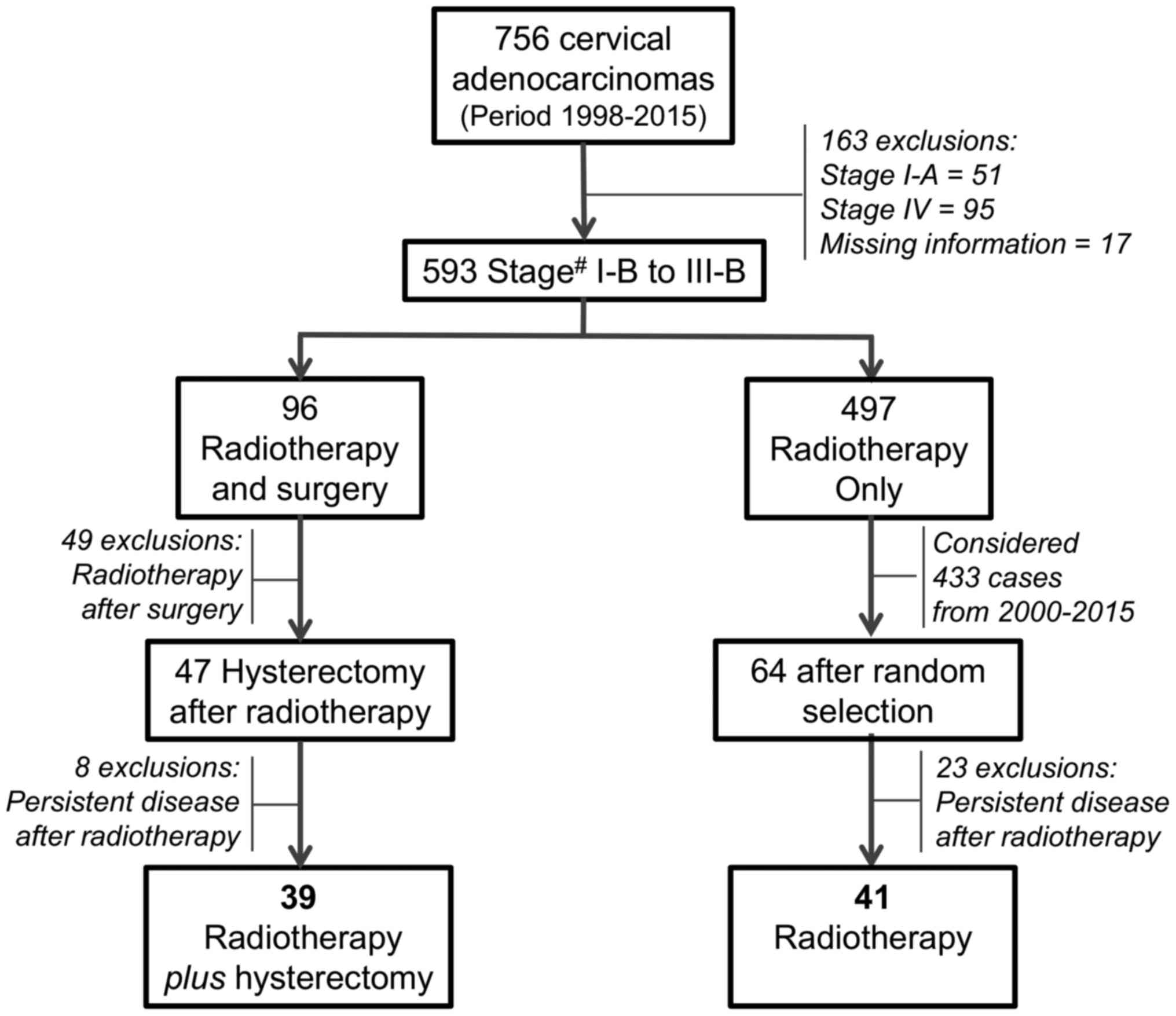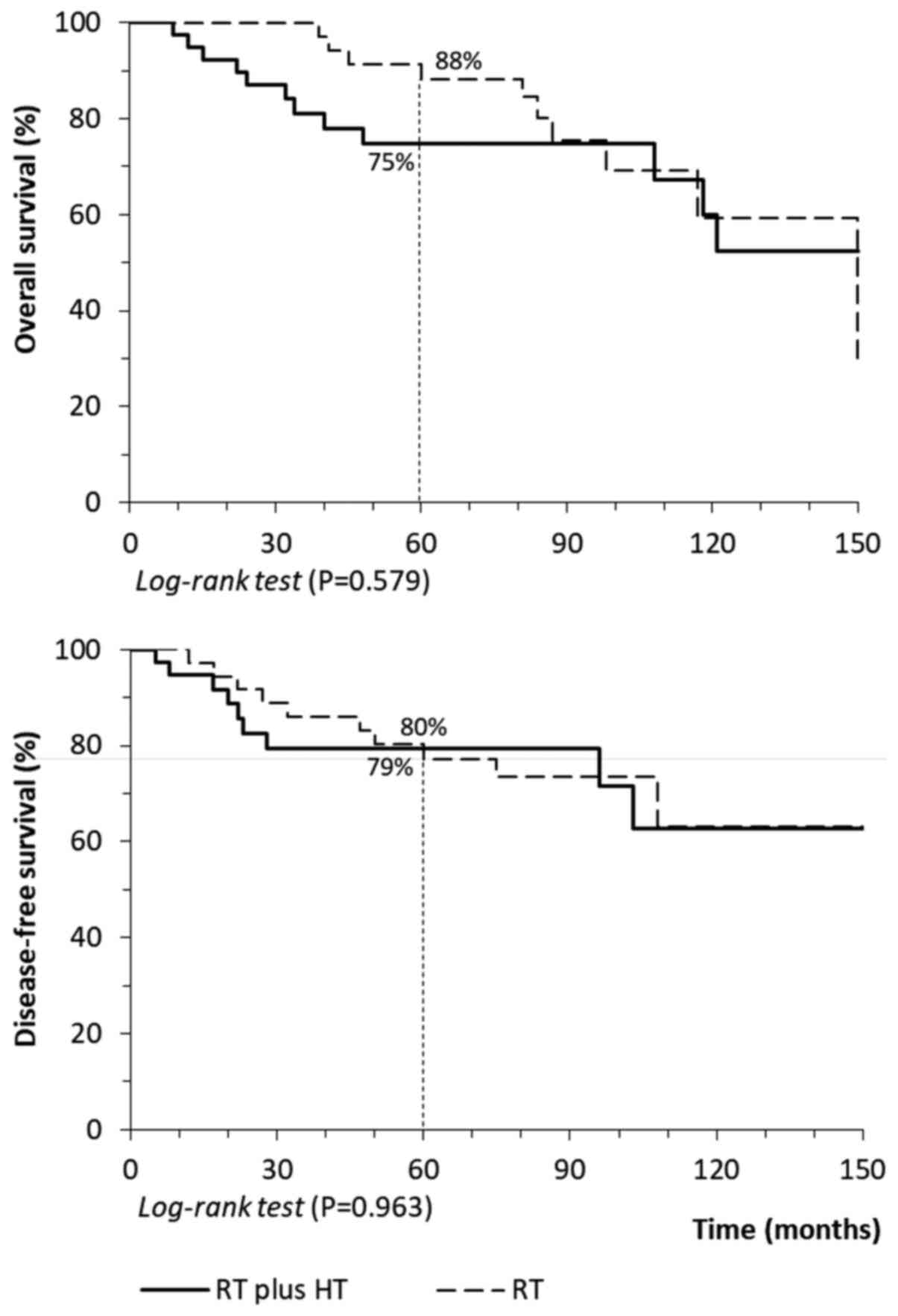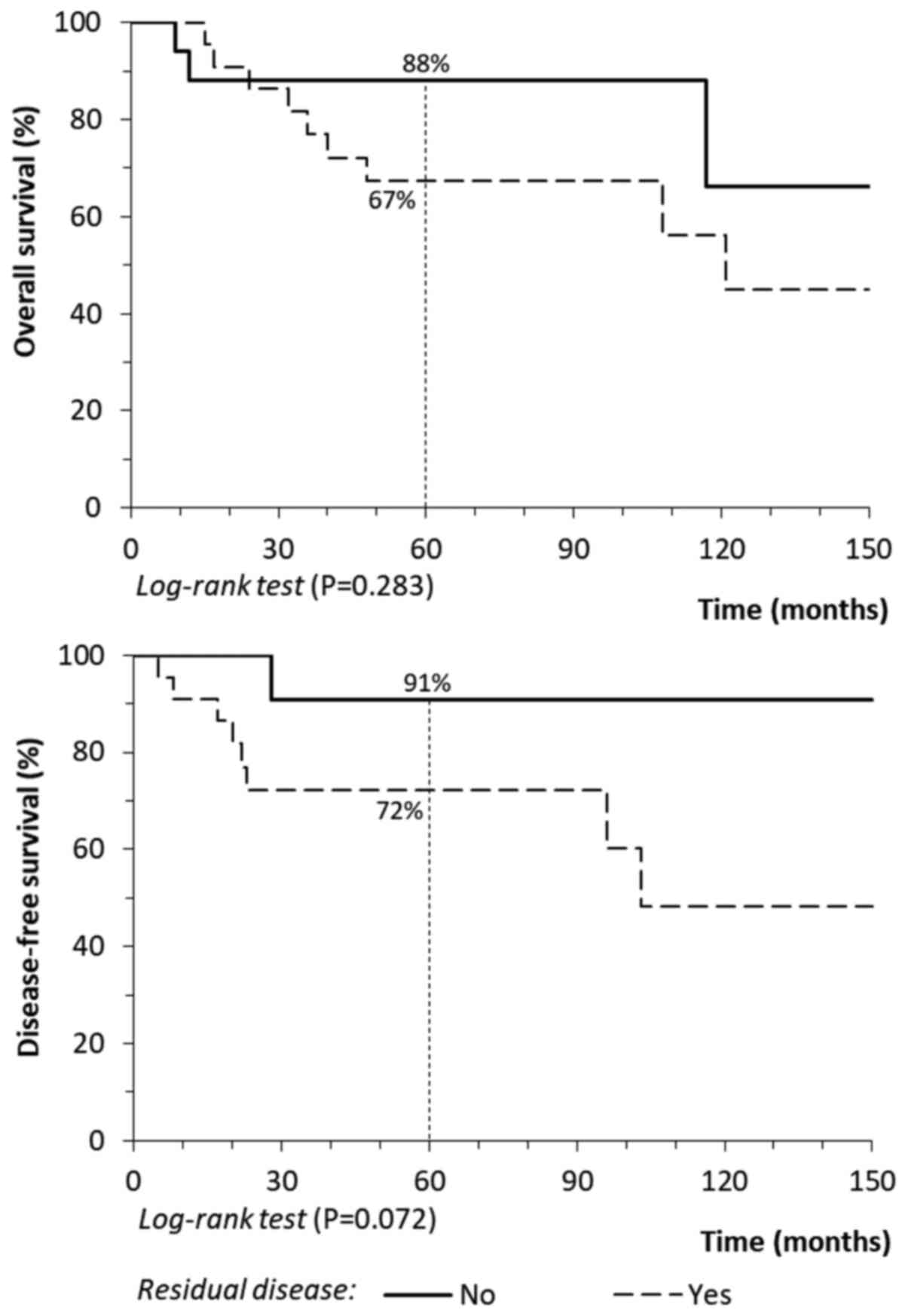|
1
|
Bray F, Ferlay J, Soerjomataram I, Siegel
RL, Torre LA and Jemal A: Global cancer statistics 2018: GLOBOCAN
estimates of incidence and mortality worldwide for 36 cancers in
185 countries. CA Cancer J Clin. 68:394–424. 2018.PubMed/NCBI View Article : Google Scholar
|
|
2
|
Castellsagué X, Díaz M, de Sanjosé S,
Muñoz N, Herrero R, Franceschi S, Peeling RW, Ashley R, Smith JS,
Snijders PJ, et al: Worldwide human papillomavirus etiology of
cervical adenocarcinoma and its cofactors: Implications for
screening and prevention. J Natl Cancer Inst. 98:303–315.
2006.PubMed/NCBI View Article : Google Scholar
|
|
3
|
Teixeira JC, Maestri CA, Machado HDC,
Zeferino LC and Carvalho NS: Cervical cancer registered in two
developed regions from Brazil: Upper limit of reachable results
from opportunistic screening. Rev Bras Ginecol Obstet. 40:347–353.
2018.PubMed/NCBI View Article : Google Scholar
|
|
4
|
Keys HM, Bundy BN, Stehman FB, Okagaki T,
Gallup DG, Burnett AF, Rotman MZ and Fowler WC Jr: Gynecologic
Oncology Group. Radiation therapy with and without extrafascial
hysterectomy for bulky stage IB cervical carcinoma: A randomized
trial of the gynecologic oncology group. Gynecol Oncol. 89:343–353.
2003.PubMed/NCBI View Article : Google Scholar
|
|
5
|
Zhou J, Wu SG, Sun JY, Li FY, Lin HX, Chen
QH and He ZY: Comparison of clinical outcomes of squamous cell
carcinoma, adenocarcinoma, and adenosquamous carcinoma of the
uterine cervix after definitive radiotherapy: A population-based
analysis. J Cancer Res Clin Oncol. 143:115–122. 2017.PubMed/NCBI View Article : Google Scholar
|
|
6
|
Lèguevaque P, Motton S, Delannes M,
Querleu D, Soulé-Tholy M, Tap G and Houvenaeghel G: Completion
surgery or not after concurrent chemoradiotherapy for locally
advanced cervical cancer? Eur J Obstet Gynecol Reprod Biol.
155:188–192. 2011.PubMed/NCBI View Article : Google Scholar
|
|
7
|
Kaidar-Person O, Yosefia S and
Abdah-Bortnyak R: Response of adenocarcinoma of the uterine cervix
to chemoradiotherapy. Oncol Lett. 9:2791–2794. 2015.PubMed/NCBI View Article : Google Scholar
|
|
8
|
Gadducci A, Guerrieri ME and Cosio S:
Adenocarcinoma of the uterine cervix: Pathologic features,
treatment options, clinical outcome and prognostic variables. Crit
Rev Oncol Hematol. 135:103–114. 2019.PubMed/NCBI View Article : Google Scholar
|
|
9
|
Jonska-Gmyrek J, Gmyrek L,
Zolciak-Siwinska A, Kowalska M and Kotowicz B: Adenocarcinoma
histology is a poor prognostic factor in locally advanced cervical
cancer. Curr Med Res Opin. 35:595–601. 2019.PubMed/NCBI View Article : Google Scholar
|
|
10
|
Huang YT, Wang CC, Tsai CS, Lai CH, Chang
TC, Chou HH, Hsueh S, Chen CK, Lee SP and Hong JH: Long-term
outcome and prognostic factors for adenocarcinoma/adenosquamous
carcinoma of cervix after definitive radiotherapy. Int J Radiat
Oncol Biol Phys. 80:429–436. 2011.PubMed/NCBI View Article : Google Scholar
|
|
11
|
FIGO Committee on Gynecologic Oncology.
FIGO staging for carcinoma of the vulva, cervix, and corpus uteri.
Int J Gynaecol Obstet. 125:97–98. 2014.PubMed/NCBI View Article : Google Scholar
|
|
12
|
Odicino F, Pecorelli S, Zigliani L and
Creasman WT: History of the FIGO cancer staging system. Int J
Gynaecol Obstet. 101:205–210. 2008.PubMed/NCBI View Article : Google Scholar
|
|
13
|
Mazeron R, Gouy S, Chargari C, Rivin Del
Campo E, Dumas I, Mervoyer A, Genestie C, Bentivegna E, Balleyguier
C, Pautier P, et al: Post radiation hysterectomy in locally
advanced cervical cancer: Outcomes and dosimetric impact. Radiother
Oncol. 120:460–466. 2016.PubMed/NCBI View Article : Google Scholar
|
|
14
|
Hequet D, Marchand E, Place V, Fourchotte
V, De La Rochefordière A, Dridi S, Coutant C, Lecuru F, Bats AS,
Koskas M, et al: Evaluation and impact of residual disease in
locally advanced cervical cancer after concurrent chemoradiation
therapy: Results of a multicenter study. Eur J Surg Oncol.
39:1428–1434. 2013.PubMed/NCBI View Article : Google Scholar
|
|
15
|
Yang J, Shen K, Wang J, Yang J and Cao D:
Extrafascial hysterectomy after concurrent chemoradiotherapy in
locally advanced cervical adenocarcinoma. J Gynecol Oncol.
27(e40)2016.PubMed/NCBI View Article : Google Scholar
|
|
16
|
Shi D, Liang Z, Zhang C, Zhang H and Liu
X: The effect of surgery on the survival status of patients with
locally advanced cervical cancer after
radiotherapy/chemoradiotherapy: A meta-analysis. BMC Cancer.
18(308)2018.PubMed/NCBI View Article : Google Scholar
|

















